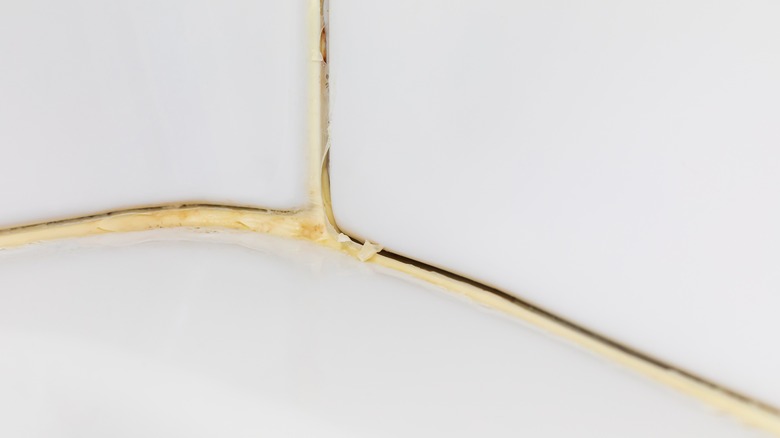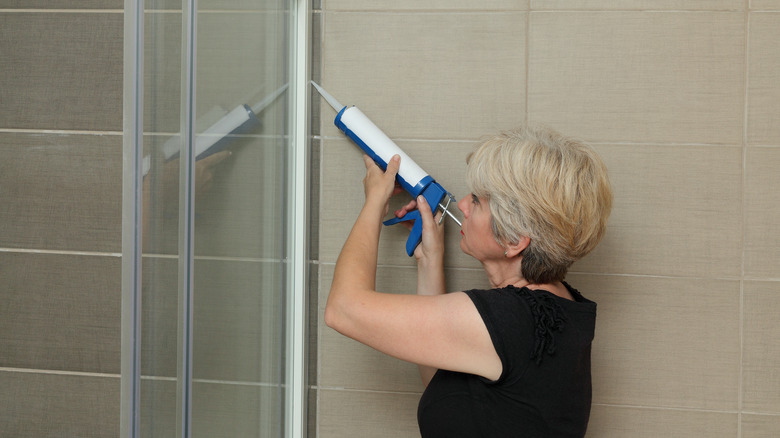The Important Step You Shouldn't Skip Before Recaulking Your Bathtub Or Shower
Caulk may be an under-appreciated part of your bathtub or shower, but this underwhelming sealant has an indispensable purpose. Serving to keep mold and moisture from seeping behind the walls and spreading, correctly applied caulk can save you from a costly disaster down the road. While caulk is easy enough to apply for the average handy homeowner, remembering to properly remove your old caulk prior to recaulking will ensure that you get the best results.
Knowing how to remove caulk from your bathtub or shower is not difficult, but it does require the correct technique. Arm yourself with a box cutter or other razor-housing tool, kitchen gloves, and a drop cloth. Line the inside of your bathtub or shower with the cloth to prevent any caulk from going down the drain and to simplify the cleanup process. Put your kitchen gloves on to protect yourself from accidental cuts (the rubber can also help you get a better grip on your razor blade); angle the box cutter or razor so that lies flat between the tile and caulk seam. Using slow, deliberate motion and pressure, slice the caulk, moving the razor blade in long movements. Once the caulk has been severed from the tile, it should be very easy to remove with a gentle pulling motion. Vinegar can help remove stubborn silicone caulk remnants. Remember to collect all caulk remnants in your drop cloth and then shake them out in the trash can.
Signs that it's time to recaulk
Generally speaking, caulk that is applied using the correct product and technique should last up to five years. However, if you notice any cracks or see any spaces where water could be seeping behind, it's time to remove the existing sealant and caulk the bathtub or shower again, as soon as possible. Since it is the caulk's job to keep moisture out of the space between tiles and joints, discoloration of your bathroom caulk is another sign that things have gone south. Gray or black spots on the caulk mean mold is beginning to grow in it, which is a sign that the sealant is no longer locking water out as it should.
Finally, since bathrooms experience so much exposure to water and steam, the caulk used in such spaces needs to be up to the job. If you notice that the newly applied caulk is already starting to show signs of wear and tear, it is likely that it was not formulated for bathroom application. Always read the label carefully before applying a new caulk or check that your contractors are actually using the right type of caulk for the job.

